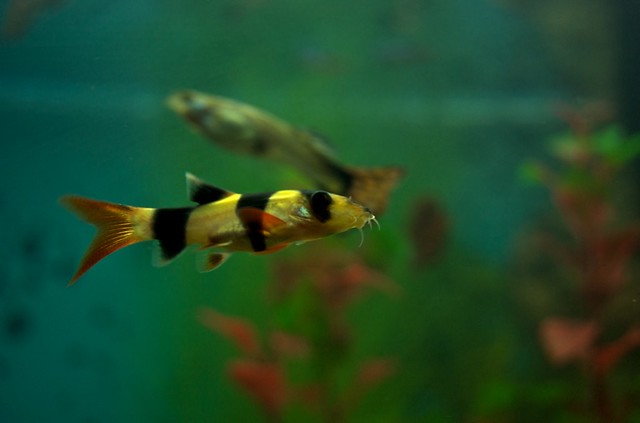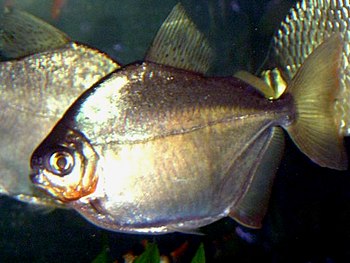 |
| African cichlid aquarium (Photo credit: Wikipedia) |
Feeding
Food is the number one cause of Cichlid aggression. This is because they live in vast numbers in the wild and are required to defend themselves for food. They also display the same behavior in an aquarium. It is best to feed in small amounts several times a day. By feeding throughout the day, you are helping to eliminate their food-related aggression.
Tank Size
Since Cichlids tend to be very territorial by nature, it is important to have a large enough tank for them to live in. It is suggested that you use at least a 55-gallon aquarium for keeping this species. Having a larger tank will allow you to build a lot of nooks and crannies for your them to hide in and claim as their territory.
Similar Sizes
When choosing your African Cichlids, it is best to pick those that are similar in size. If you have one fish that is much larger than the others, it is most likely going to take over your tank and be the most aggressive Cichlid. This rule of thumb is especially important if you are keeping several males of the same species.
Before choosing your tank mates, I suggest that you do a bit of research to determine how big they will get when they are adults. This will also help to ensure that you have the proper size tank for the species you plan on keeping.
Variety
Having a large variety of colors with different body markings will also help reduce their aggression. If they look like one another, chances are they will not get along.
Temperature
It is recommended that you keep the temperature of your Cichlid tank on the low side. High temperatures will increase the fish's metabolism and can trigger more aggressive behavior. Of course, you don't want freezing cold water, but 74-76 degrees is acceptable for most African Cichlid species.
Male/Female
The general rule for most African Cichlid species is to keep one male per every three females. This is important because males, in almost all cases, tend to be the most aggressive cichlids in the tank. This is because the males will be aggressive towards females that do not want to mate. Having more females in the tank will take the male's focus off of just one female and instead his anger will be evenly distributed.
species is to keep one male per every three females. This is important because males, in almost all cases, tend to be the most aggressive cichlids in the tank. This is because the males will be aggressive towards females that do not want to mate. Having more females in the tank will take the male's focus off of just one female and instead his anger will be evenly distributed.
Mixing species
The three main lakes that African Cichlids originate from are Malawi, Tanganyikan , and Victorian. Although it has been done, I do not recommend combing species from different lakes. However, if you insist on mixing Cichlids from different lakes, Malawi and Tanganyikan are going to be your best bet. If you plan to mix the two, I suggest that you do some serious research to determine which species will be compatible with one another. If you are a beginner at keeping cichlids, it is best to stock your tank with fish from the same lake.
, and Victorian. Although it has been done, I do not recommend combing species from different lakes. However, if you insist on mixing Cichlids from different lakes, Malawi and Tanganyikan are going to be your best bet. If you plan to mix the two, I suggest that you do some serious research to determine which species will be compatible with one another. If you are a beginner at keeping cichlids, it is best to stock your tank with fish from the same lake.
African Cichlids are a wonderful species to keep, but it is important to remember that they can be aggressive if you aren't careful. Taking precaution and following these guidelines will help keep your Cichlid aggression at a minimum. These really are a beautiful species of fish and I hope that you can enjoy them as much as I do.
|






